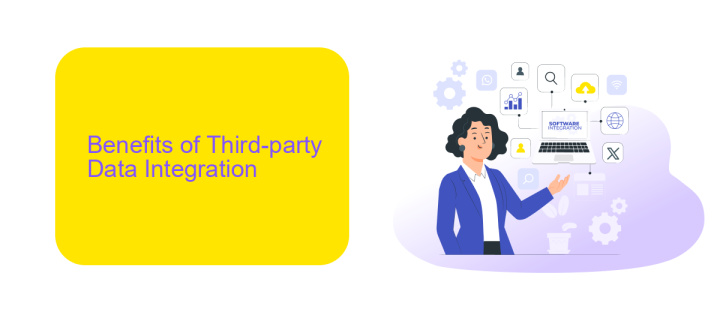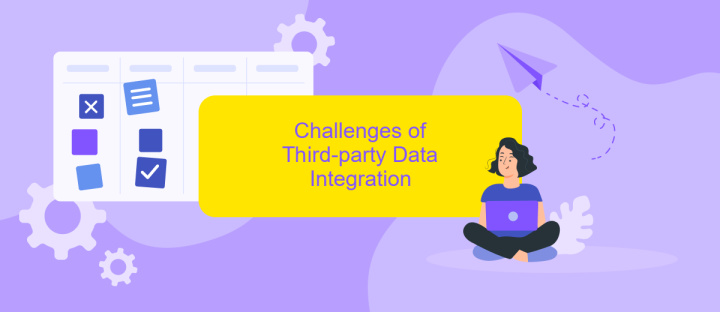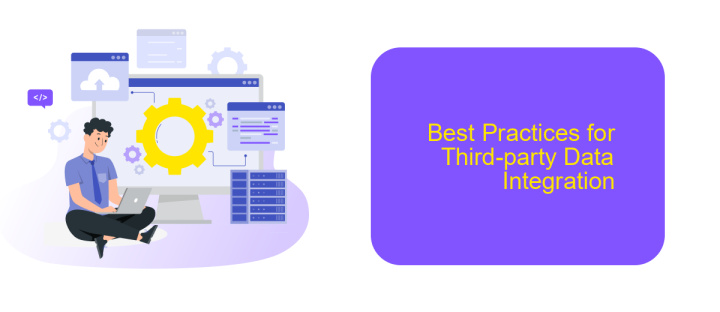Third-party Data Integration
Third-party data integration is a crucial aspect of modern business strategies, enabling organizations to enhance their data capabilities by incorporating external data sources. This process not only enriches internal datasets but also provides deeper insights, driving more informed decision-making. By leveraging third-party data, companies can gain competitive advantages, optimize operations, and better understand market trends and customer behaviors.
Introduction
Third-party data integration is a critical aspect of modern business operations, enabling organizations to streamline workflows and enhance data-driven decision-making. By integrating external data sources, businesses can achieve a more comprehensive view of their operations, customer behavior, and market trends. This process involves connecting various systems and platforms to ensure seamless data flow and consistency.
- Improved data accuracy and consistency
- Enhanced operational efficiency
- Better customer insights and personalization
- Streamlined reporting and analytics
One of the tools that facilitate third-party data integration is ApiX-Drive. This service allows businesses to connect multiple applications and automate data transfers without the need for extensive programming knowledge. By leveraging such platforms, companies can reduce manual data entry, minimize errors, and ensure that all systems are up-to-date with the latest information. Consequently, third-party data integration becomes a cornerstone for achieving a competitive edge in today's data-centric world.
Benefits of Third-party Data Integration

Integrating third-party data provides numerous advantages for businesses aiming to enhance their operational efficiency and decision-making processes. One significant benefit is the ability to access a broader range of data sources, enabling companies to gain deeper insights and a more comprehensive understanding of their market. This integration facilitates improved customer profiling, targeted marketing campaigns, and personalized customer experiences, which can lead to increased customer satisfaction and loyalty.
Moreover, third-party data integration can streamline workflows by automating data collection and analysis, saving valuable time and resources. Tools like ApiX-Drive simplify the integration process by offering seamless connectivity between various data sources and applications. This not only reduces the complexity of managing multiple data streams but also ensures data accuracy and consistency. Consequently, businesses can make more informed decisions, optimize their strategies, and ultimately drive growth and profitability.
Challenges of Third-party Data Integration

Integrating third-party data can present a range of challenges that organizations must navigate to ensure seamless data flow and integrity. These challenges often stem from the complexity of different data formats, varying data quality, and the need for robust security measures.
- Data Compatibility: Different systems may use various data formats, making it difficult to ensure consistent data integration.
- Data Quality: Inconsistent data quality can lead to errors and misinterpretations, requiring additional validation and cleaning processes.
- Security Concerns: Integrating third-party data often involves sensitive information, necessitating stringent security protocols to protect against breaches.
- Scalability: As data volumes grow, the integration solution must scale efficiently to handle increased loads without compromising performance.
- Compliance: Adhering to regulatory requirements for data privacy and protection can complicate the integration process.
To address these challenges, services like ApiX-Drive offer automated data integration solutions that simplify the process. ApiX-Drive provides tools for mapping different data formats, validating data quality, and ensuring secure data transfer, making it easier for organizations to integrate third-party data seamlessly and securely.
Best Practices for Third-party Data Integration

Integrating third-party data can significantly enhance your business operations, but it requires careful planning and execution. To ensure a smooth and effective integration process, it's essential to follow best practices that address common challenges and optimize performance.
Firstly, always start with a clear understanding of your data requirements and objectives. Identify the types of data you need, the sources from which you will obtain it, and how it will be used within your organization. This will help you choose the right third-party services and tools for your integration needs.
- Ensure data quality by validating and cleaning data before integration.
- Use robust APIs and integration platforms like ApiX-Drive to automate and streamline the process.
- Implement strong security measures to protect sensitive data during transfer.
- Regularly monitor and maintain integrations to ensure ongoing accuracy and performance.
By following these best practices, you can maximize the benefits of third-party data integration while minimizing potential risks. Tools like ApiX-Drive can simplify the process, providing a reliable and efficient way to connect various data sources and ensure seamless data flow across your systems.
- Automate the work of an online store or landing
- Empower through integration
- Don't spend money on programmers and integrators
- Save time by automating routine tasks
Conclusion
In conclusion, third-party data integration is a vital component for modern businesses seeking to streamline their operations and enhance decision-making processes. By leveraging external data sources, organizations can gain deeper insights, improve customer experiences, and drive innovation. However, it is essential to choose the right tools and platforms that facilitate seamless integration while ensuring data security and compliance.
One such tool is ApiX-Drive, which simplifies the process of connecting various applications and automating data workflows. With its user-friendly interface and robust functionality, ApiX-Drive enables businesses to efficiently manage their data integrations without the need for extensive technical expertise. As companies continue to embrace digital transformation, the ability to effectively integrate third-party data will become increasingly crucial for maintaining a competitive edge in the marketplace.
FAQ
What is third-party data integration?
Why is third-party data integration important?
What challenges can arise during third-party data integration?
How can I automate third-party data integration?
What are some best practices for third-party data integration?
Apix-Drive will help optimize business processes, save you from a lot of routine tasks and unnecessary costs for automation, attracting additional specialists. Try setting up a free test connection with ApiX-Drive and see for yourself. Now you have to think about where to invest the freed time and money!


